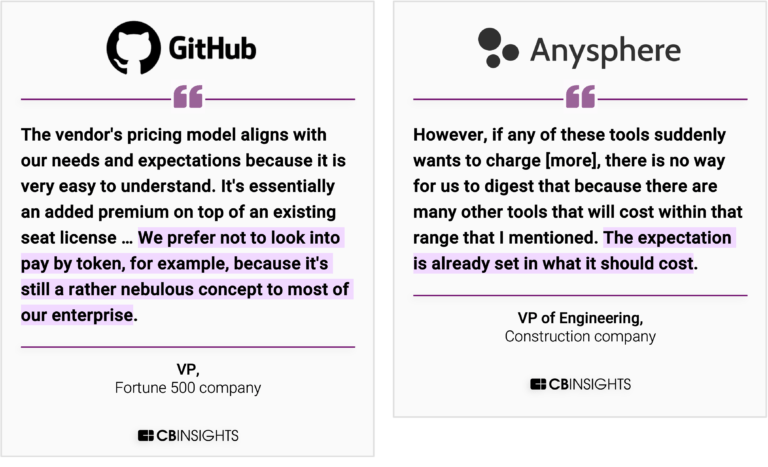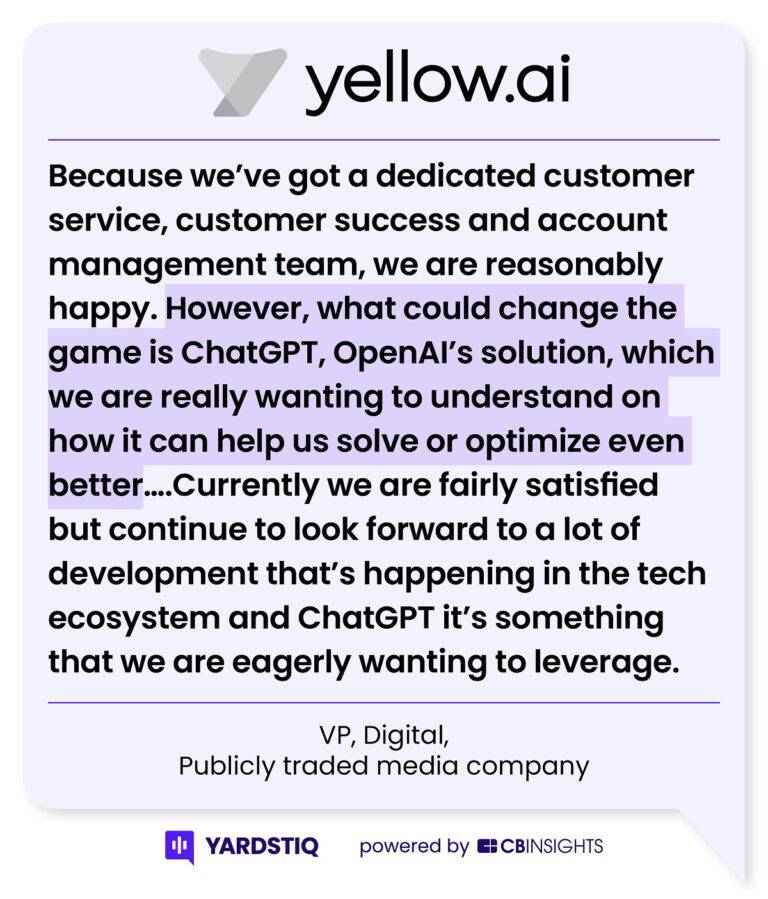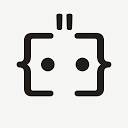
Sourcegraph
Founded Year
2013Stage
Series D | AliveTotal Raised
$223MValuation
$0000Last Raised
$125M | 4 yrs agoRevenue
$0000Mosaic Score The Mosaic Score is an algorithm that measures the overall financial health and market potential of private companies.
-32 points in the past 30 days
About Sourcegraph
Sourcegraph offers a code intelligence platform. The company offers a coding assistant, search capabilities for codebases, and tools that automate some development tasks. It primarily serves the software development industry and provides tools that work with different code hosts. It was founded in 2013 and is based in San Francisco, California.
Loading...
Sourcegraph's Products & Differentiators
Code Search
Code Search allows developers to find, fix, and navigate code with any code host or language across multiple repositories with real-time updates. It deeply understands a company’s code, prioritizing the most relevant results for an enhanced search experience.
Loading...
Research containing Sourcegraph
Get data-driven expert analysis from the CB Insights Intelligence Unit.
CB Insights Intelligence Analysts have mentioned Sourcegraph in 2 CB Insights research briefs, most recently on Aug 28, 2025.


Apr 17, 2023
How software buyers are responding to generative AIExpert Collections containing Sourcegraph
Expert Collections are analyst-curated lists that highlight the companies you need to know in the most important technology spaces.
Sourcegraph is included in 6 Expert Collections, including Unicorns- Billion Dollar Startups.
Unicorns- Billion Dollar Startups
1,309 items
Generative AI
2,951 items
Companies working on generative AI applications and infrastructure.
Artificial Intelligence (AI)
20,894 items
AI Agents & Copilots Market Map (August 2024)
322 items
Corresponds to the Enterprise AI Agents & Copilots Market Map: https://app.cbinsights.com/research/enterprise-ai-agents-copilots-market-map/
AI agents (March 2025)
376 items
Companies developing AI agent applications and agent-specific infrastructure. Includes pure-play emerging agent startups as well as companies building agent offerings with varying levels of autonomy. Not exhaustive.
AI agents & copilots
1,771 items
Companies developing AI agents, assistants/copilots, and agentic infrastructure. Includes pure-play emerging agent startups as well as companies building agent offerings with varying levels of autonomy.
Sourcegraph Patents
Sourcegraph has filed 1 patent.

Application Date | Grant Date | Title | Related Topics | Status |
|---|---|---|---|---|
9/5/2014 | 9/5/2017 | Software project management, Free software project foundations, Software design patterns, Software design, Software engineering | Grant |
Application Date | 9/5/2014 |
|---|---|
Grant Date | 9/5/2017 |
Title | |
Related Topics | Software project management, Free software project foundations, Software design patterns, Software design, Software engineering |
Status | Grant |
Latest Sourcegraph News
Sep 28, 2025
September 28, 2025, 5:51 pm IDT In the frenetic world of artificial intelligence, the only constant is change, and the only path to survival is often self-disruption. This profound reality underscored a recent conversation on the Latent Space podcast, where host Alessio Fanelli sat down with Quinn Slack, CEO of SourceGraph, and Thorsten Ball, Amp’s “Dictator” and lead engineer. Their discussion illuminated SourceGraph’s strategic pivot from its established AI coding assistant, Cody, to its latest offering, Amp Code, delving into the philosophy behind building coding agents in a hyper-evolving landscape, the challenges of rapid iteration, and the surprising realities of developer adoption. Thorsten Ball articulated a fundamental realization that catalyzed their shift: “We realized we gotta handle this differently, we gotta reset expectations… you create the new thing that kind of disrupts the business on its own.” This isn’t merely about feature upgrades; it’s about acknowledging that the very definition of a “good” AI coding tool is ephemeral. Quinn Slack underscored this, stating, “The only thing that matters is building the best coding agent. Nothing else matters.” This stark philosophy drives their product development, recognizing that tools relevant just six or twelve months ago are already being superseded. The team consciously chose to “burn the bridge” on some of Cody’s established use cases and customer contracts to fully embrace a new, more agile paradigm with Amp. This radical approach extends to SourceGraph’s internal culture. Thorsten revealed that the Amp core team operates with minimal bureaucracy: “We don’t do formal code reviews. We still push to main. We still ship 15 times every day.” This “founder mode” mentality, unburdened by the slower cycles of larger enterprise software, allows them to dogfood extensively and maintain an unparalleled pace of innovation, directly responding to the rapid advancements in underlying AI models. This internal agility is critical when the external landscape shifts quarterly, not annually. Amp’s market strategy also reflects this adaptability. Instead of aiming for universal enterprise adoption, as was the case with Cody, they selectively target early adopters. Quinn explained, “We pick off the people that want to move as fast as we want to move.” This focus on the “model product frontier” allows them to iterate with users equally invested in pushing boundaries. Interestingly, their internal polling showed a 50/50 split between VS Code extension users and CLI users for Amp, a surprising outcome that led them to consider discontinuing the VS Code extension to further streamline development and responsiveness. A core insight from Ball is that the underlying large language models (LLMs) are rapidly becoming a mere “implementation detail.” While models like Claude 3.5, Claude Code, and Codex CLI dominate headlines today, their individual supremacy is fleeting. “The models will become an implementation detail… the specific model or its version will not be as visible anymore.” The true value, they argue, lies in the “harness” or “scaffolding” built around these models, enabling seamless integration and dynamic adaptation to new, more capable LLMs as they emerge. The relentless pace of AI innovation demands an equally agile development philosophy. Sticking to old paradigms is a recipe for obsolescence. This constant evolution also highlights the evolving nature of AI agent failure modes. Thorsten warned against the “hands-off the wheel” mentality, where developers might blindly trust an agent. He noted, “You can use it in the wrong way and it looks like you’re getting results.” The non-deterministic nature of LLMs means that even a seemingly correct output might be fundamentally flawed, necessitating human oversight and understanding of the underlying architecture. Over-reliance on agents without critical evaluation can lead to “hangover” effects and “spaghetti code.” The market itself is still learning how to effectively leverage these tools, with many users still unsure how to ask the right questions or verify the output. The implications for established software development practices are profound. Traditional roadmaps, long-term architectural planning, and extensive code review processes become liabilities in an environment where fundamental capabilities change every few months. SourceGraph’s success with Amp, shipping 15 times a day with no formal code reviews on the core team, demonstrates a lean, experimental approach that prioritizes learning and speed over rigid adherence to past best practices. This also creates a unique dynamic where the “best” tool is less about a single, perfected product and more about the ability to continuously adapt and integrate the latest advancements. SourceGraph’s pivot to Amp Code embodies a crucial lesson for the tech industry: in the age of generative AI, clinging to established products and development cycles is a direct path to irrelevance. The future belongs to those willing to disrupt themselves, embrace radical agility, and continuously re-evaluate their fundamental assumptions about product, market, and process.
Sourcegraph Frequently Asked Questions (FAQ)
When was Sourcegraph founded?
Sourcegraph was founded in 2013.
Where is Sourcegraph's headquarters?
Sourcegraph's headquarters is located at 548 Market Street, San Francisco.
What is Sourcegraph's latest funding round?
Sourcegraph's latest funding round is Series D.
How much did Sourcegraph raise?
Sourcegraph raised a total of $223M.
Who are the investors of Sourcegraph?
Investors of Sourcegraph include Andreessen Horowitz, Insight Partners, Geodesic Capital, Sequoia Capital, Felicis and 12 more.
Who are Sourcegraph's competitors?
Competitors of Sourcegraph include Anysphere, Replit, Windsurf, Tabnine, Moderne and 7 more.
What products does Sourcegraph offer?
Sourcegraph's products include Code Search and 2 more.
Who are Sourcegraph's customers?
Customers of Sourcegraph include Booking.com, Indeed, Priceline, Palo Alto Networks and Leidos.
Loading...
Compare Sourcegraph to Competitors

Augment Code develops an artificial intelligence platform that has a coding agent providing code context and suggestions, along with integration with development tools. It was founded in 2022 and is based in Palo Alto, California.

CodeComplete focuses on providing artificial intelligence (AI)-powered development tools. Its main service includes an AI coding assistant for enterprises, designed to improve the end-to-end developer workflow by incorporating the company's libraries and coding patterns while ensuring data security and privacy. The company primarily serves the enterprise software industry. It was founded in 2022 and is based in San Francisco, California.

Replit focuses on application development within the software industry. It provides a platform for building web applications, games, chatbots, and other types of software, using AI to assist with coding and design. Replit serves a range of roles including product managers, designers, software engineers, and founders, across sectors such as technology startups, enterprise solutions, and individual developers. Replit was formerly known as Neoreason. It was founded in 2016 and is based in San Mateo, California.

Anysphere is an applied research lab focused on automating coding within the software development industry. The company develops tools to create a hybrid engineer combining human and artificial intelligence to enhance programming efficiency. Anysphere primarily serves the software engineering sector, offering solutions that integrate machine learning and systems design. It was founded in 2022 and is based in San Francisco, California.

Tabnine focuses on artificial intelligence (AI). It offers an AI assistant that provides code completion capabilities, aiming to increase efficiency in software development by automating routine coding tasks. The primary customers of Tabnine are developers and software development companies. The company was founded in 2017 and is based in Tel Aviv, Israel.
CodeStory specializes in enhancing programming workflows through AI integration in the software development sector. Their main product, Aide, is an AI-native editor designed to assist developers with code writing, debugging, and collaboration. The company primarily serves the software development industry, offering tools that facilitate effective AI leverage in developers' workflows. It was founded in 2023 and is based in San Francisco, California.
Loading...
